The Pottery Makers
Archaeologist Joffre Coe said North Carolina Indian history is like a motion picture whose reel burned. Flames broke story frames apart, sending snippets into the air that later settled on the ground. Most were black cinders and indecipherable. Some still had clear images. Of these, a few could be ordered correctly. But how others sequenced on the original film was questionable, particularly if somebody had trampled or dislodged them. What’s more, even if the archaeologists’ skill (and sometimes luck) put the remnants of plot and dialog in proper order, the story line could be wrong or skewed because motives were lost.
This may be why archaeologists do a bit of shrugging when asked about the Woodland—that time and lifeway tucked between 1000 BC and AD 1000. Some things they readily understand, but others leave them wondering. They know, for instance, that Indian people then commonly made clay pottery and settled much of the year in small villages near rivers, tributaries, and inlets. But they are still puzzling out how big those small villages were; how many people lived in them; how long they stayed; how houses were shaped and built; how village life differed from Mountains to Piedmont to Coastal Plain.
Archaeologists think it’s a good bet that most Woodland villagers had gardens. Even though botanical evidence is skimpy in North Carolina, it’s indisputable. But though they gardened, Woodland people didn’t depend on cultivated foods. White-tailed deer, nuts, and fruits fed them to a large degree.
Other evidence shows Woodland people buried their dead with ceremony, using customs that varied according to time and place. They made craft items, such as stone pipes, with stunning artistry. They dropped the use of spears for hunting and adopted the bow and arrow. They engaged in trade—both of things and ideas, both far-flung and local. Some even saw glimmers of more complex instead of strictly egalitarian societies, as individuals or families gained control over trade, specialized in ritual or became artisans.
Such images are fairly clear; they recreate, in varying degrees, general scenes of Woodland life. What gets archaeologically tricky—and intriguing—is the scenes don’t play out neatly and identically from place to place. Indeed, the first hints Native people in North Carolina had cultural differences show up during the Woodland. Right now, the big archaeological questions are to what extent, why, and how?
Clues in Clay
Archaeologists piece together answers step by step. They have ideas (hypotheses) about what life in different regions was like, and they find facts (such as, artifacts) to support or refute their notions. For North Carolina’s Woodland period, no fact is more observable than clay pottery. Regardless of what other evidence—plant, animal, or architectural—is decayed and gone from sites, archaeologists can count on finding abundant fragments (called sherds) of this virtually indestructible material.
It’s amazing what the broken fragments can say after so many years. They tell of people’s roots to a place by how resilient manufacturing styles or surface designs are; they point to contacts with other people or ideas by abrupt or marked differences; they chart the geographic range of their makers by the boundaries where one style ends and another picks up. Such information is particularly vital because many other things geographically scattered and culturally different people used, like bone tools, looked much the same.
Pottery is so important to archaeologists they can be very single-minded about it. Research reports are packed with details about vessel thickness, clay additives, surface design, and interior finish. Numerous Woodland pottery types have been identified based on differences in these characteristics. Each type is, in archaeologists’ vernacular, diagnostic of a culture and time.
Fortunately, pottery types tend to be pretty much the same in undisturbed soil levels at sites. Once archaeologists sort out the traits each kind has, they tag it with a name. They also determine its age by means of radiocarbon dating or other kinds of testing.
So far, archaeologists have used pottery to build chronological sequences of Woodland cultures in North Carolina. Site by site, they have constructed chronologies for the Mountains, Piedmont, and Coastal Plain by continually asking questions about pottery. How were the vessels made? When were they made? What style did they represent? In what ways did styles change over time? How were the styles similar or different from what people in neighboring hamlets, regions, or states turned out? Never scientifically content, archaeologists let answers to these questions spark others: Where did lines of influence come from? Who interacted with whom? When? Who lived in relative isolation? And why?
Pottery, thus, is a sensitive marker. In essential ways, it is one of the main texts that archaeologists read to interpret Woodland-period cultures. It is also the yardstick used to arrange those cultures in time.
The Piedmont
Humans settled the Piedmont’s edges early in Woodland times, but left the region’s center relatively empty. Archaeologists don’t know why. Nor do they know why people started using the interior later in the Woodland and the degree they used it. But where archaeologists find traces of Woodland hamlets near the Piedmont’s rivers and major tributaries, they discover a strikingly similar theme for life between 1000 BC and AD 1000: continuity.
The Doerschuk Site
The Doerschuk site sits near Badin, North Carolina and the lake of the same name created by the Narrows Dam on the Yadkin River. Excavating there, archaeologists recovered clay pottery that is the earliest found so far in North Carolina’s heartland. Apparently made in the first millennium BC, the pottery was in a soil level above one having no hints of occupation, neatly separated from a deeper zone when earlier Archaic people lived there. Because Badin is a locally prominent name, archaeologists chose it for the pottery.
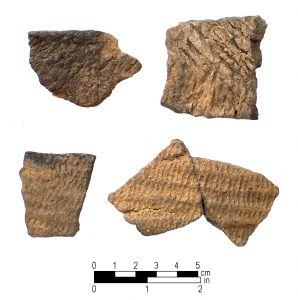
What struck archaeologists about Badin pottery is how well made it is. In fact, Badin vessels are so well made archaeologists think people must have been making an ancestral pot they haven’t found yet. The vessels are simple, straight-sided jars with sturdy thin walls and cone-shaped bases. Their sooted surfaces suggest that the vessels were propped directly on the fire and used for cooking.
Some archaeologists think because stylistically similar pottery turns up in eastern Tennessee, northern Georgia, and South Carolina, the people making it migrated to the Piedmont from one or the other of those places. Other archaeologists discount the migration idea. They think ideas, not people, did the traveling.
Nobody debates, though, that the Woodland people at Doerschuk who made Badin ware used manufacturing techniques similar to those in neighboring regions. They strengthened vessels for firing by adding sand and sometimes pebbles to the wet clay. Also, like people throughout the ancient Southeast, they used the method called coiling to make their pots.
Basically, coiling involves making long ropes or “coils” of clay. Starting at the base, potters build the vessel’s walls by placing coils on top of each other. They then blend the coils together and thin the walls by hitting the sides with a wooden paddle. After the walls are built and paddled, the pot is then fired to harden the clay.
Often people wrapped the paddle with string, or covered it with fabric, or carved it with a design. Every time the paddle hit the pot (while the clay was still wet, of course), it left a reverse impression of the string or design on the pot’s surface. Archaeologists call this technique paddle stamping. Fortunately for archaeologists, the kinds of paddles used by potters varied from time to time and from place to place. Thus, the designs left by these paddles are distinctive of particular cultures, and such distinctions enable archaeologists to create chronologies based on pottery style. At Doerschuk, folks making Badin pottery covered wooden paddles with cord or fabric. Somewhat later in time, they began making another kind of pottery called Yadkin, which was sometimes decorated with a carved paddle that left a waffle-like, checked pattern on the vessel’s surface. The temper, or strengthening agent, used in the two kinds of pottery was also different. In Badin ware the tempering material was sand, while in Yadkin ware it was crushed quartz.
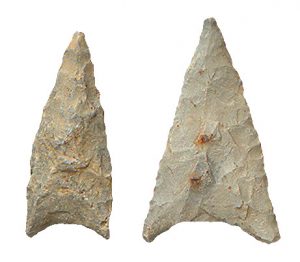
Pottery isn’t the only novelty of early Woodland life revealed at Doerschuk. Associated with the pottery, the chipped stone points archaeologists recovered were markedly different from the long, square-stemmed spear points earlier Archaic inhabitants had used. Triangular in shape and about an inch wide from shoulder to shoulder, the points from the Woodland level are of a style well suited for tipping arrows. They are staunch clues that hunting technology had shifted from spear to bow and arrow.
The view provided by the Doerschuk site into early Woodland life is intriguing but sketchy. No house patterns or food remains survived, and therefore no direct evidence exists of how many people lived at Doerschuk or what they ate.
The Thelma Site
A Woodland site called Thelma helps fill in some blanks. Thelma is located in Halifax County along the Roanoke River. Based on the food remains excavated there, we know that people ate deer, muskrat, raccoon, rabbit, squirrel, opossum, woodchuck, fox, turkey, and turtle. We also know that they ate quantities of hickory nuts. Although archaeologists didn’t find any seeds from domesticated plants, their hunch (based on evidence from contemporary sites elsewhere) is people at Thelma probably grew small grains (such as goosefoot and marsh elder) in gardens. They ate freshwater mussels and deposited the shells in refuse heaps. The presence of fired daub—mud used as plaster—suggests that people lived in wooden-pole houses, but the shape and number of these houses is unknown.
Burial practices survived better and document that Thelma’s people placed their dead in individual graves. Besides the custom of placing their dead in single graves, Thelma’s people used, at least once, an ossuary, or communal grave, which contained four people. Archaeologists don’t think these people died all at once. Rather, they believe the people died at different times and may have been family members. Ethnohistoric accounts describe people who use ossuaries prepare and protect the bodies in charnel houses until group burial can take place. Perhaps this was the case at Thelma.
The Mountains
Archaeologists know more about Woodland life in parts of the Mountains than they do for the Piedmont or Coastal Plain. Funds for a long-term Cherokee Project undertaken by the University of North Carolina at Chapel Hill financed a keen historical probe into the Cherokee homeland in the late 1960s. So much data was recovered during the project, archaeologists are still analyzing it.
Boiled down, excavated data have allowed archaeologists to chart three cultures through time that may be related to modern-day Cherokee. Pottery, again, is the key to distinguishing them. Archaeologists use it to trace stylistic changes that mark cultural breaks in the local chronological sequence and to discern the who and what of other regional influences that bucked against the strength of tradition. Other images of Woodland life tag alongside.
Swannanoa
In Buncombe County between 1000 and 300 BC, people lived in a village beside the Swannanoa River. The village was set in one of those “old” places; Archaic people had picked the spot centuries before. It was well situated and well watered, with rich, friable earth hosting a variety of edible seed plants. Geographically, the village was in a transition zone that quickly stepped up from the valley to Appalachian ridges where nut trees and game were plentiful. Today, the campus of Warren Wilson College in Swannanoa, North Carolina surrounds this ancient village spot. Excavations still go on there, and archaeologists call the site (not surprisingly) Warren Wilson.
When archaeologists discovered Warren Wilson, they knew they had a bonanza. It is stratified, and its distinct levels contain evidence that document peoples lives at that site over thousands of years. Within the soil layer dated to the early Woodland, archaeologists found pottery that looked a lot like what they were finding in contemporarily dated Piedmont sites. Specifically, early Woodland potters at Warren Wilson, like those in the Piedmont, made vessels they tended to decorate by stamping them with paddles covered with cord or fabric. Over time, Warren Wilson’s potters used other decorations. By the late Woodland, for instance, some smoothed the outside walls of vessels; others carved checks or parallel lines on paddles they used to stamp on the surface of wet clay.
In the sometimes confusing way that archaeologists name things, they call Warren Wilson’s early Woodland pottery Swannanoa ware. Swannanoa is also the name archaeologists use to designate Warren Wilson’s early Woodland culture and the people who made the ware.
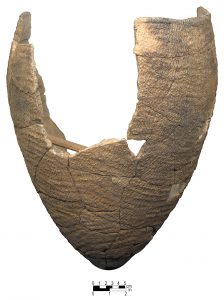
Swannanoa pottery was not just similar to the contemporary Piedmont versions, it had the same stylistic cousins in northern Georgia and eastern Tennessee. Archaeologists think its broad reach means pottery making did not begin in isolated spots. Rather, it was part of a technological revolution of regional scope that was taking place during this time.
Archaeologists don’t know if people lived at Warren Wilson year-round. Yet they stayed in sufficient numbers for enough time to leave debris that created well-defined deposits archaeologists can investigate. Like those in the Piedmont, Swannanoa house shapes are a mystery. While some soil stains are visible from decayed house-posts, none of the postholes form patterns. Archaeologists do find hearths at Warren Wilson, which they identify by clusters of rocks cracked and broken from the fire’s heat. Compared to the small, round hearths Warren Wilson’s prior Archaic residents had, those of the Woodland residents are big. Some are more than 5 feet across and have several layers of tightly packed rocks that scatter around the hearth’s center.
Warren Wilson’s size suggests that Swannanoa people had bigger and more stable communities than their Archaic predecessors; if so, they must have had an economy capable of supporting such communities. From carbonized plant remains, archaeologists know the Swannanoa ate hickory, walnut, and acorns. So far, they haven’t found evidence for cultivated plants. But most think the Swannanoa folk had an economy based on intensive seed-collecting and gardening. Evidence from over the hills in eastern Tennessee confirms that contemporary early Woodland people living there in the same kinds of places cultivated small gardens.

The white-tailed deer was the primary source of meat. Besides hunting near their main village, the Swannanoa people had small seasonal hunting camps along ridge tops and within upland valleys. They probably used the seasonal camps, too, as bases from which they harvested wild plant foods like nuts. In some of those camp sites, they left the mortars they used to grind foods.
Hunting tools included various cutting and scraping implements, along with two kinds of chipped points whose styles are like those archaeologists find on the Piedmont. One is a point with a stem on its base, presumably hafted on spears. At Warren Wilson, it’s found together with a large, triangular point archaeologists think people used to tip arrows. Presumably, the mixing of these two point types in the same soil level means that sometime between 1000 and 300 BC, the Swannanoa adopted the bow, and the atlatl (like on the Piedmont) was on the way out as the hunting tool of choice. In levels dating to the later Woodland, all points archaeologists recover are triangular, hinting the switch in hunting technology was complete.
Besides Warren Wilson, archaeologists find other Swannanoa villages scattered about. A couple sit along the Tuckasegee River and the Garden Creek floodplains. In these places, early Woodland life carried on to the same beat as Warren Wilson’s.
Pigeon
Change took place about 300 BC that began a different, 500-year-long cultural phase that archaeologists call Pigeon. This cultural phase is still murky. Archaeologists haven’t found a pure Pigeon level on a site yet. So far, they only find distinctive pottery they call Pigeon, along with other artifacts associated with it all mixed together with stuff from later times in layers at sites like Warren Wilson, Garden Creek, and Tuckasegee. Rough dates put the Pigeon culture between 300 BCand AD 200.
Pigeon pottery is easy to spot. It shows a dramatic break with the cord-marked and fabric-impressed vessels made by the Swannanoa and other earlier Woodland people who lived in the Mountains and Piedmont. For example, where the Swannanoa potters used sand as temper, Pigeon potters used crushed quartz to strengthen the clay so the pot wouldn’t crack during firing. Pigeon potters also decorated vessel surfaces by stamping them with paddles carved in checked designs. Another distinctive characteristic of Pigeon pottery is the iridescent sheen on the pots’ insides. Some vessels even had clay supports, or “feet,” on their base. These pots are striking amid the Pigeon’s usual bowls or jars with tapered bases and constricted necks.
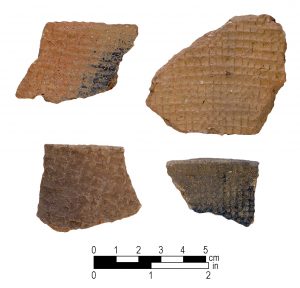
Pigeon potters adopted a widespread style also found in Georgia, South Carolina, and eastern Tennessee. At this time, Woodland people throughout these areas became part of a regional community of shared ideas, trade, and economies.
Even so, the Pigeon people had their cultural feet locally planted. While they apparently adopted new styles of decorating clay vessels, many of their other tools and ornaments were like those of their Mountain predecessors. Pigeon people used the same kinds of chipped stone scrapers for processing hides; they used small triangular arrow points to hunt. They also made implements of polished stone. Pecking away and grinding smooth flake scars left by chipping, they turned out handsome axes and other tools for woodworking. They also made polished-stone ornaments, called gorgets, they wore about their necks. All this is strong evidence for local cultural continuity.
Like their predecessors, the Pigeon folk took full advantage of the Mountains’ various ecological zones. Their traces show up on floodplains, upland valleys, coves, and ridge tops. They, too, probably used most of the sites located away from floodplains as hunting camps or as bases for collecting plant foods. Some archaeologists think that during Pigeon’s 500-year span, people gradually settled more in the floodplains. Nothing definite proves this, but the archaeological hunch is the Pigeon, like people elsewhere in the South between 300 BC and AD 200, were becoming increasingly reliant on horticulture.
Connestee
Another cultural transition took place in the Swannanoa-Pigeon region about AD200. The Connestee phase emerged, marked archaeologically, of course, by its distinctive pottery.
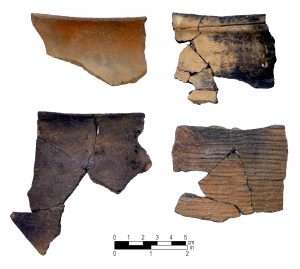
Archaeologists think a clear relationship exists between Pigeon and Connestee ceramics. After AD 200, vessels had thin walls, and sand (instead of the crushed quartz) was once more used as temper. While a few were cord marked, most Connestee surfaces were plain, brushed, or decorated with a series of parallel lines impressed with a carved paddle. The usual vessel shapes were simple bowls and cooking jars.
The Garden Creek site in Haywood County has provided much of our evidence for the Connestee phase as archaeologists now know it. During their occupation at Garden Creek, the Connestee people built an earthen mound, which was constructed in two distinct stages. Presumably, people used this structure as a platform for ceremonies. When archeologists first started digging Garden Creek Mound, they peeled away the topmost layer of fill and found an earlier mound below it. This one measured about 40 by 60 feet wide and was about 2 feet high. Continuing the excavation, archaeologists found it sat on top of the decayed posts of a 20-foot-square building, which was the first structure built there. Traces of charcoal and burned daub suggest that fire had destroyed this building.
Besides evidence for buildings, archaeologists found rock-filled hearths dug into the mound’s floors. The hearths had ash, charcoal from burned wood, burned animal bones, broken pottery, and other trash still in them. Exactly how people used these hearths will probably stay a mystery. But archaeologists suspect that community feasts may have regularly taken place on or near the mound, indicating that it was a public gathering place.
As intrigued as they are by Garden Creek, archaeologists have learned that most Connestee sites do not have mounds. This pattern of occasional mound sites is typical of other Woodland people living across the Southeast. In some places, they used them to elevate public buildings. In other places, people buried community members in them. But, for the most part, Woodland communities lacked mounds.
Overall, everyday Connestee life was a replay of what was going on in the Piedmont during the Woodland. Connestee villages had become larger and more settled. Some covered several acres. Usually, the Connestee people put their main villages in the floodplains of major streams and tucked their small, seasonal camps in surrounding ecological zones. Hunting, gathering, and fishing filled their bellies to a large degree. However, archaeological evidence also indicates that horticulure was becoming increasingly important. Archaeologists have recovered seed remains that show the Connestee folk were cultivating gardens of native plants like goosefoot, maygrass, and knotweed, all of which produced edible seeds.
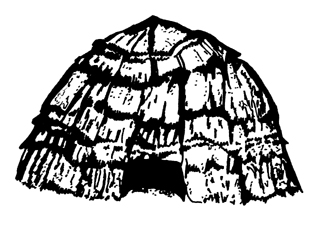
Based on patterns left by decayed posts at a village site called Ela on the Tuckasegee River in Swain County, we know that Connestee houses were circular. Most Connestee homes at Ela had no inside hearths. Apparently, people cooked in large, rock-lined fire pits scattered through the village. Ela’s public buildings were also circular, but bigger than the houses.
Evidence at Connestee sites shows both the continuity of old ways and the adoption of new ones derived from interaction with neighboring cultures. In particular, the Connestee people participated in a large-scale trade network called the Hopewell Interaction Sphere. This network cut a wide swath across the Southeast and the Midwest, affecting people of various cultures and languages. Archaeologists think Hopewell influences filtered into Connestee life for a couple of reasons. First, the path was easy, as the area was interlaced with many ancient trade routes. Second, and perhaps more important for the development of contacts, the Connestee people had something other traders wanted: mica. Archaeologists think mica helped boost the Connestee villagers’ position as partners in the trade network that stretched from the upper Midwest to the Gulf Coast.
Mica—a shining mineral in thin, layer-cake form—was deposited in pockets in the southern Appalachians. The Connestee people had access to it and others valued it. Artisans in places as far away as Ohio and Illinois shaped its sheets into forms ranging from birds to human hands and heads. Microwear analysis on a stone blade found at Garden Creek shows the tool was used to cut this soft mineral.
In the exchange, the Connestee people picked up their share of exotic goods and ideas from other participants in the Hopewell trade network. Among these were prismatic blades chipped from imported stone like chalcedony and chert; copper beads, pins, and sheets; clay figures in human and animal shapes; and Hopewell-style pottery.
Archaeologists think the Connestee peoples’ trade position and power sparked the first inklings of social ranking in Mountain communities. Until then, Native life was presumably egalitarian—everybody on the same sociopolitical footing. But Connestee individuals or families who controlled mica trade and who acted as brokers for other valued items (like marine shell) may have slowly gained prestige and position that may even have been handed down in hereditary fashion.
The Coastal Plain
Archaeologists spend lifetimes studying the array and sequencing of pottery styles for the regions in which they specialize. Those studying the Coastal Plain’s history are no exception. They’ve identified pottery types and ordered them on timelines; they’ve studied how decorative and manufacturing styles fan geographically and where their points of origin might be.
These studies have led to a theory: early Woodland people living on the Coastal Plain sat at a cultural frontier where traditions from the north and the south met. The effect of these influences divided North Carolina’s Coastal Plain in half during the Woodland, about at the Neuse River line.
North of the Neuse, people decorated pottery with cord impressions and tempered clay with sand, both of these traits having been derived from a Middle Atlantic tradition that filtered down through southeastern Virginia. The earliest pottery of this kind in North Carolina dates to about 1000 BC. It turns up at a site called Parker, which sits along the Deep Creek tributary of the Tar River. Later, people in the state’s northern Coastal Plain picked up other decorative ideas. Pottery surfaces decorated with fabric impressions and net impressions gained popularity by 800 BC. About that time, a decoration stamped with a carved (not cord-wrapped) paddle also got a foothold. Called simple stamping, this technique rendered bold, parallel lines across vessel surfaces. Plain ware with incised decorations found a niche then, too. Throughout the north Coastal Plain, temper across the styles ranged from sand to grit to shell.
Meanwhile, North Carolina’s southern Coastal-Plain groups picked up notions of their own. Beginning in the late Archaic as early as 2000 BC, people adopted a practice introduced from the South Carolina and Georgia coasts of making a smooth, thick clay vessel, which archaeologists call Stallings ware. The temper they used was natural plant fiber, like moss or grass. Resembling wide-mouthed flower pots, the vessels were made by people who lived mostly south of the Neuse River.
Similar to what happened in the northern Coastal region, other pottery styles eventually filtered into southern Coastal life. By 1300 BC, people decorated some vessels with dots or lines, which were inscribed with a stick before the pot was fired. Later, after 500 BC, simple stamping with bold lines and checked designs became popular. Among the southern Coastal styles, temper switched from the fiber in Stallings pottery to sand, grit, and sometimes shell.
Horizontally divided north-south in terms of pottery preferences, the Coast is also split vertically into two geological mini-regions. The Tidewater is the eastern half, indented with estuaries and sounds; and the Interior Coastal Plain is the western portion between the Tidewater and the Piedmont.
Early in the Woodland period, it seems people lived mostly on the Interior Coastal Plain along the same small streams that their Archaic predecessors preferred. Their encampments were small, stable bases like those most contemporary Piedmont and Mountain groups had. Similarly, their main source of meat was the white-tailed deer along with other smaller animals, birds, and turtles. Yet, unlike their inland neighbors, Coastal people developed a greater reliance on shellfish, fish, and other estuarine foods.
Groups began a slow drift toward the Tidewater during the early Woodland. By 500 BC, some were making seasonal camps along the rivers, estuaries, and sounds flanking the ocean. In places like Colington and Roanoke Islands, archaeologists think several extended families spent springs and summers gathering shellfish. They left large piles of shells with other refuse, such as animal bone, bits of broken clay pots, and sometimes even human bone, mixed in. In the fall and winter, they left the blustery coastal camps and retreated to the Tidewater’s more protected side to occupy villages accessible to riversides, game, and good soils.
Archaeologists think most early Woodland groups on the Coastal Plain switched camps at least twice a year. People on the Tidewater seemed to divide the year equally between camps, while those based farther inland stayed put much of the year in their riverside camps to take advantage of immediate stocks of freshwater mollusks and fish. But they, too, left evidence of hunting and butchering tools scattered at sites throughout the Coastal Plain, which suggests they left their main village for regular hunting forays. Regardless of the variability in length of stay, archaeologists think people living in both the Tidewater and Interior Coastal Plain 2,000 years ago were occupying key places long enough to have, in effect, semi-permanent villages.
All this links indirectly to pottery making and how it may have edged its way into life. Many archaeologists tend to think pottery-making goes hand in hand with settled village life. Fragile and relatively heavy clay pots tend to be impractical for people who move their settlements frequently. If contemporary hunting and gathering people are any guide, highly nomadic bands don’t carry around such heavy, breakable items. So pottery making suggests they stayed settled long enough in places to warrant the work. At minimum, they counted on regular returns to main settlements so they could leave such items there, awaiting them.
As archaeologist Bruce Smith puts it, pottery making may have been part of a container revolution that included, too, the widespread use of gourds growing in people’s gardens. Clay pots and gourds held water and foods, both wild ones like nuts and cultivated ones like seeds. Pots allowed greater ease and efficiency in cooking and processing foods. They replaced the water-filled skin or bark sacks earlier people put fire-heated rocks in to boil liquid for cooking. In short, Smith thinks a greater demand for waterproof containers may have kept pace with the seed collection systems people were developing.
By AD 800, coastal people had abandoned most settlements along tributary streams and relocated along major trunk streams and estuaries. So far, it’s unclear how big their villages were, how they were laid out, how the houses were shaped, or how many people each contained. Now that archaeologists are fairly comfortable with the pottery sequences they’ve developed, they are turning to research to fill in these blanks. A key problem, however, is modern development has rolled over much of the Coast, destroying sites already threatened by erosion.
Even so, the artifacts archaeologists find at Coastal sites fill in some images of village life. Large, triangular arrow points they call Roanoke; stone blades of various sizes; stone net sinkers; sandstone abraders; shell pendants; polished-stone ornaments; polished-stone woodworking tools; mats woven from Juncus grass. Like everybody else in North Carolina, Coastal people shifted hunting technology to bows. They worked wood, using the sharp edges of tear-drop shaped celts. They were artists, designing and smoothing jewelry. They had a weaving industry. They made cordage, knotting some, at least, into fishing nets weighted with sinkers.
During this period, people were usually buried in graves. Mourners seldom placed objects in the graves. But when they did, they tended to put items like small arrow points. Cremation was another custom practiced in some places at this time. A distinctive practice associated with cremation presumably channeled up from the South. Along North Carolina’s southern coast, a culture archaeologists call Cape Fear used low, sand burial mounds. Dated to about AD 950, the round mounds are mostly south of the Neuse River. Most (but not all) contained cremated remains accompanied by grave offerings like pipes, polished stone gorgets, and conch-shell cups.
Seeds of Change
Planters of small gardens, Woodland people across the Southeast breathed life into what would eventually become intensive agriculture and a significant shift in Native American lifeways.
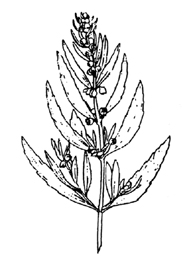
By the early Woodland, seed selection begun by Archaic forebears had activated genetic pressures in some seeds so they germinated more quickly than they would if untended in the wild. By the middle of the Woodland, several native wild plants—sunflower, marsh elder, and goosefoot—had become domesticated. The clues are in the seeds’ larger-than-wild shapes and uniform sizes. Also, some plants people used, like the large-seeded marsh elder, are now extinct, strongly suggesting the plants had become dependent on people to propagate and grow.
The collection of locally domesticated seed plants make up what archaeologists call the Eastern Agricultural Complex. Like other issues archaeologists try to settle from the past’s faint traces, it fuels a debate. This one whirls around whether plant cultivation originated independently in the eastern United States. If the practice did (as more and more archaeologists are beginning to believe), then it’s significant for a couple of reasons. It turns upside-down any notion that ancient people in the East learned about cultivating plants from ideas spreading along trade routes from the Southwest or Mexico. It also means early agriculture evolved in at least two parts of North America: Mexico and the East.
However botanical evidence finally writes the story, other things are indisputable. By the Woodland, people were inextricably tangled in the life cycles of seed plants. As vigorous new beds of locally domesticated and wild seed plants sprang up, they attracted additional human attention. While few late Archaic people cultivated small plots, Woodland Indians made it common pratice. Experimental archaeologists have learned that even with small plots and minimal effort, large quantities of seeds can be easily produced.
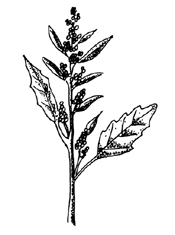
North Carolina archaeologists are cautious when talking about plant domestication and gardening. This is because they haven’t found sites yet having the kind of botanical evidence they need to say, without any doubt, that all North Carolina Woodland Indians planted gardens. Just smatters of seed residue show up in some Mountain sites; a few Coastal sites have it; the Piedmont is iffy. Nonetheless, archaeologists don’t doubt gardening was part of local Woodland life. Reliable evidence for cultivated plants is found just over border in eastern Tennessee. Places like these make indirect evidence for horticulture in North Carolina compelling. Archaeologists only have to look at local peoples’ cultural links with known horticulturalists, along with similarities in pottery styles and other artifacts, and village sizes and locations along fertile floodplains to deduce horticulture was part of their Woodland life.
Archaeologists caution, however, there is no reason to think horticulture was particularly important in how Woodland people fed themselves. Weighing seed crops’ importance against other foods recovered from sites, archaeologists find that most food came from the age-old practices of hunting, gathering, and fishing. Clearly, no agricultural revolution happened in eastern North America. As archaeologist David Hurst Thomas observed, there was no food rebellion where people took control over nature, domesticating plants and animals to provide a secure food base. Late Archaic and early Woodland plant domestication was a very casual process, with no radical change in human diets or habits.
Eventually, however, the skills and knowledge leading to domesticating plants allowed Woodland people to accept new, more productive crops not native to eastern North America. So it was that corn and beans made their way across trade routes from the Southwest and Mexico to local gardens. These exotic plants would eventually support the rise of the East’s—and North Carolina’s—Mississippian-period agricultural societies.
